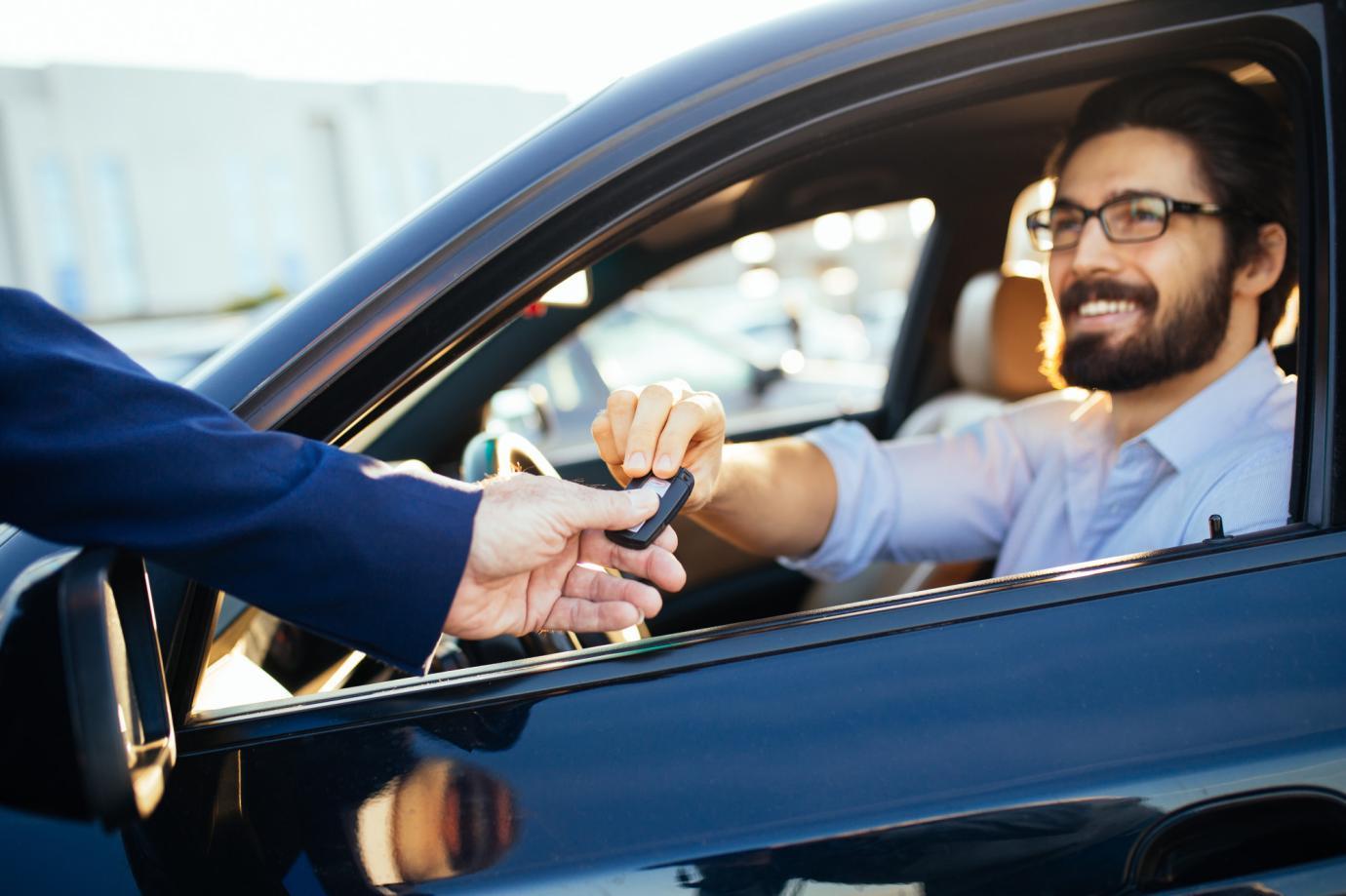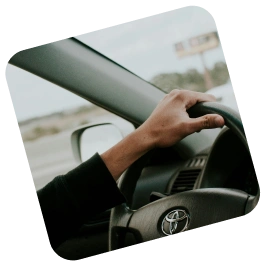
Compared to buying a brand-new car, used cars require a bit more attention. You need to check the history, condition, and paperwork to make sure you’re getting a good deal.
First impressions can be deceiving. You can buy a used car with multiple previous owners that is in great condition with no hidden issues, or you can pick a newer model that turns out to have problems. The difference is knowing where to look.
Checking the paperwork first
Start by asking to see the V5C registration document. This confirms that the seller is the registered keeper and may help establish that they are legally entitled to sell the car. While it’s possible to buy a car online without a V5C, doing so comes with added risk, so approach with caution. You also need to check for any accompanying documentation, such as manuals, warranty handbooks, or original receipts (proof of purchase).
Also, check that the vehicle identification number (VIN) on the documents matches the one on the car itself. You may also want to run a DVLA vehicle information checker or SORN check.
Next, you can review the car’s MOT history online with the registration number. Service records indicate how well the car has been maintained over time. In person, you can also check the current MOT certificate with the seller.
An HPI check gives extra verification during the used car buying process. It can reveal if the car has outstanding finance and help you avoid outstanding finance fraud. It may also appear on lists of stolen vehicles or have undergone write-off concealment.
Modifications
Ask the seller about any modifications. Even small changes, like aftermarket alloy wheels or upgraded filters, should be disclosed. Modification issues affect insurance, resale value, and sometimes even the car’s condition. Certified pre-owned (CPO) schemes exclude aftermarket parts or modifications, so check if the car qualifies.
Also read: Can you modify a financed car?
Exterior inspection
Taking a close look at the car’s exterior can tell you a lot about its history and how it has been cared for:
- Check the bodywork for uneven panel gaps or paint inconsistencies. These indicate previous repairs, accident damage history, flood damage, or poor-quality work.
- Look closely for rust, especially around the wheel arches, under doors, and near sills.
- Inspect the windscreen, windows, mirrors, lights, and rubber seals for cracks, chips, or leaks.
- Uneven tyre wear and tear may point to alignment issues or suspension problems. The legal requirements should also be met for tyre tread depth (1.6mm minimum).
Interior inspection
You should also do a visual inspection of the interior:
- Condition of the car: seats, carpets, and seat frames. Look for tears, sagging, stains, or damage that could indicate neglect.
- Switch the ignition on and make sure all gauges and warning lights function correctly. Malfunctioning indicators can hide mechanical or electrical issues.
- Test all controls: windows, mirrors, infotainment systems, and switches. You can even get your hands on OBD diagnostic tools to check certain electrical systems.
- Make sure the heating and air conditioning systems work properly.
Brake, suspension, & wheel check
Before you buy a used car, take a close look for any signs of wear on the brake discs and pads. While driving, check if there are squeaks or unusual noises. Also, check for any vibration or pulling to one side when braking.
Pay attention to the suspension, including the struts and shock absorbers, for any signs of leaks. Moving over uneven surfaces may reveal bouncing or knocking that suggests the suspension components are worn.
Then, assess the wheel bearings and steering by checking that the steering wheel responds firmly with minimal play. Listen for grinding or rumbling sounds.
Safety checks
Seat belts, airbags, and child restraint anchors should all be present and in proper working order. Make sure the wipers, washers, and defoggers work properly, and that the mirrors are in good condition and correctly positioned. It’s also important to consider the condition of the exhaust system and fuel lines.
See if all door locks and latches function securely, and verify that any built-in safety assistance features, such as traction control, stability control, or warning sensors, are active and functioning correctly.
Mileage
Compare the mileage to the car’s age and service history. While high mileage isn’t automatically a problem if the vehicle is well maintained, discrepancies may signal tampering or “clocking.” Cars with lower mileage are rare in the used car market, but they’re possible to find.
Also read: What is good mileage on a used car?
Engine bay & fluid checks
Here are the most important things to look for:
- Start with the engine systems: check the oil level, colour, and consistency. Oil that is very dark, gritty, or contains metal shavings indicates excessive wear or internal engine problems.
- Examine the coolant condition and make sure it is at the correct level and free from rust, debris, or contamination.
- Look at the clutch fluid and the gearbox oil levels, which should be clear and at the proper level. Discoloured or dirty fluids affect performance and suggest the car you’re looking to buy has been neglected.
- Belts should be free from cracks or fraying, hoses should show no leaks or bulges, and the battery should be clean with no corrosion around the terminals.
Take a test drive
A test drive assessment is an important step in the buying process. Listen for unusual engine noises, check gear shifts, acceleration, braking, and overall handling. Make sure the car feels comfortable and drives as expected. Test features like adaptive cruise control, reversing cameras, and other advertised functions to confirm they work correctly.
Check the price
Do a market value assessment by comparing the vehicle to similar models, considering its age, mileage, service history timeline, and any recent maintenance or upgrades. Used cars with a lower-than-average price save you money upfront, but may hide costly issues. At the same time, a higher price often reflects careful maintenance or extra features, yet it requires a bigger initial investment.
Also, consider depreciation rates and potential repair cost estimates.
Also read: How much should you spend on your first car?
Do you need a professional pre-purchase inspection (PPI)?
A pre-purchase inspection (PPI) is a careful check of a vehicle before purchasing that is carried out by a professional mechanic. It’s a great way to get peace of mind before you commit to buying from a dealership or privately.
An independent vehicle inspection is particularly valuable in these situations:
- Vehicles without a service history – A full service record shows how well a car has been looked after. Without it, it’s hard to know whether important maintenance has been done.
- Buying a car from a private seller – Private sales usually don’t include 6-month/5-year warranty periods, 30-day return policy, or other warranties and guarantees. An inspection gives you clarity and peace of mind.
- Purchasing a used car in another city – If you can’t view the car in person, a professional can inspect it on your behalf. This should save you the worry of missing something important.
Inspections start at about £79 and cover up to 185 points, including a test drive.
Red flags & deal-breaker warning signs
Some issues are small and fixable, but others are red flags that will cost you time and money. Whether you’re buying from a dealer, buying privately, at car auctions, or via online marketplaces, there are risks involved.
Here are the biggest issues to look out for when inspecting used cars:
Mismatched paint or filled-in rust spots
Avoid buying a car with differences in paint colour, uneven finishes, or areas where rust has clearly been filled in. These usually show that the car has been involved in accidents or undergone significant bodywork repairs. Even if the repairs look neat, the underlying problem could affect the car’s safety and resale value.
Uneven tyre wear indicating alignment issues
Tyres that show more wear on one side, patches of uneven tread, or irregular patterns often reveal problems with wheel suspension components or steering geometry. Such issues not only reduce the lifespan of the tyres but can also impact handling and overall road safety.
Smoke types & their meanings
Exhaust smoke of any unusual colour is a strong signal that the engine may have underlying problems.
- Blue smoke usually means the engine is burning oil, often due to worn piston rings or valve seals.
- White smoke can indicate that coolant is leaking into the combustion chamber, which could suggest a blown head gasket or more serious engine damage.
- Black smoke typically points to a rich fuel mixture or injector issues, so the engine is probably not running efficiently.
Persistent warning lights
Dashboard warning lights that stay on, flash repeatedly, or return after being reset usually point to problems in important areas like the engine, braking system, airbags, or traction control. These lights warn you about potential safety risks or mechanical faults.
Any car with persistent warning lights should be checked by a qualified mechanic to uncover the exact problem and understand the possible repair and running costs before purchase.
Why choose car finance for your used car purchase?
If paying for a used car upfront isn’t the right fit, finance lets you spread the cost and gives you more choice and protection. Carplus can help you compare finance deals and find lenders that work with inspected, approved used cars — useful if you want extra reassurance when buying used cars on finance.
- Pre-checked vehicles – Many finance providers only work with vehicles that have been inspected and approved, so you start with added reassurance.
- Reach for something better – Finance makes newer models or higher trims more affordable.
- Terms that suit you – You can adjust the deposit amount and repayment period to match your budget.
- Predictable payments – You know exactly what you’ll pay each month, which makes it easier to plan ahead.
- Boost your credit score – Regular, on-time payments help improve your financial profile.
Some car finance options include legal and financial protections you wouldn’t get with private sellers. Certain regulated finance agreements are covered by consumer protections and formal dispute routes — for example, lenders authorised by the Financial Conduct Authority or dealers signed up to the Motor Ombudsman scheme. In some situations you may also be able to use chargeback or protections that are broadly similar to Section 75.
Final words
If you are looking to buy a used car in the UK, a clear checklist makes the process less stressful. It also helps you spot potential issues early on.
There’s a lot to do before you buy a used car. It involves everything from how long the previous keeper owned the car, annual MOT testing records, and a vehicle age assessment, all the way to checking tyres and tread depth, fluid levels, and minor details like scratches or squeaks.
Be thorough, ask questions, and enjoy the journey to your next car!








